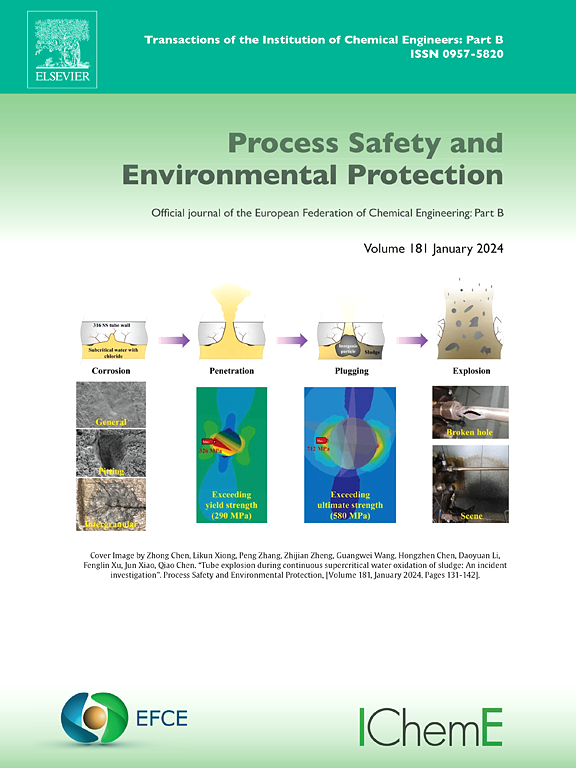Integrated decarbonization system for ethane cracking: Carbon capture, CO2 hydrogenation, solar-powered water electrolysis and methanol to olefins
IF 6.9
2区 环境科学与生态学
Q1 ENGINEERING, CHEMICAL
引用次数: 0
Abstract
Achieving Net Zero emissions is a crucial goal for mitigating climate change, with chemical production processes being major contributors to greenhouse gas emissions. Conventional ethylene production plants, primarily fueled by cracked hydrogen and methane, are significant sources of carbon emissions from chemical plants. These emissions present not only environmental challenges but also economic risks due to impending carbon taxes and stricter regulations. Introducing carbon capture in ethylene production is therefore essential for reducing the carbon footprint, aligning with global sustainability targets, and ensuring economic resilience in a future where carbon emissions are increasingly penalized. This work aims to decarbonize and expand the existing ethylene plant by incorporating solar power, carbon capture process and methanol to olefin (MTO) technology. The raw materials of the MTO process include CO2 captured from flue gas, cracked hydrogen from the ethylene cracker and green hydrogen from proton exchange membrane (PEM) electrolyzer driven by solar power. Hybrid modelling is utilized to develop a mathematical model of the solar-driven PEM water electrolyzer in MATLAB, and simulate the rate-based carbon capture process, methanol production process and MTO process in Aspen Plus. The results indicate that 85 % of CO2 is converted using cracked hydrogen and green hydrogen, leading to 5.4 % increase in ethylene production and 53.6 % increase in propylene production, respectively. The levelized revenues for ethylene in the original plant, the 70 % carbon mitigation scenario, and the 85 % carbon mitigation scenario are 813 USD/tC2H4, 525 USD/tC2H4, and 258 USD/tC2H4, respectively. Sensitivity analysis reveals that mitigating 85 % of CO2 becomes economically unviable if solar power exceeds 100 USD/MWh.
求助全文
约1分钟内获得全文
求助全文
来源期刊

Process Safety and Environmental Protection
环境科学-工程:化工
CiteScore
11.40
自引率
15.40%
发文量
929
审稿时长
8.0 months
期刊介绍:
The Process Safety and Environmental Protection (PSEP) journal is a leading international publication that focuses on the publication of high-quality, original research papers in the field of engineering, specifically those related to the safety of industrial processes and environmental protection. The journal encourages submissions that present new developments in safety and environmental aspects, particularly those that show how research findings can be applied in process engineering design and practice.
PSEP is particularly interested in research that brings fresh perspectives to established engineering principles, identifies unsolved problems, or suggests directions for future research. The journal also values contributions that push the boundaries of traditional engineering and welcomes multidisciplinary papers.
PSEP's articles are abstracted and indexed by a range of databases and services, which helps to ensure that the journal's research is accessible and recognized in the academic and professional communities. These databases include ANTE, Chemical Abstracts, Chemical Hazards in Industry, Current Contents, Elsevier Engineering Information database, Pascal Francis, Web of Science, Scopus, Engineering Information Database EnCompass LIT (Elsevier), and INSPEC. This wide coverage facilitates the dissemination of the journal's content to a global audience interested in process safety and environmental engineering.
 求助内容:
求助内容: 应助结果提醒方式:
应助结果提醒方式:


